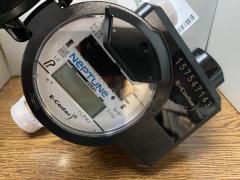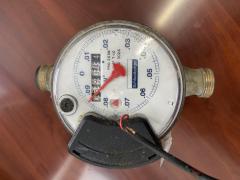Water Meter Upgrade Program - Winchester
The Township of North Dundas is upgrading water meters in the Village of Winchester. This mandatory program is being completed by Neptune Technology Group under By-law 2024-79 and the Ontario Public Utilities Act.
There is no cost to residents for the meter or installation. The upgrade takes about 30 to 90 minutes, and water will be shut off briefly during the appointment.
Book Your Appointment
To schedule:
Visit this link.
Or call: 1-800-667-4387
Monday–Thursday: 8:00 a.m. to 8:00 p.m.
Friday: 8:00 a.m. to 6:00 p.m.
Evening and weekend appointments available
Before Your Appointment
Make sure your water meter is accessible with at least 16" x 16" of clearance
Ensure your shutoff valve is clear and working
An adult (18+) must be present
Let Neptune know if your meter is in a crawlspace
Important
If you received a final notice, please book immediately to avoid potential penalties, including possible water service interruption.
For safety details, visit this link.
How to Read Your Water Meter
Your home may be equipped with one of two models of water meters: a rotating dial meter or a digital water meter.
To view the numbers on the digital water meter, a direct light is required to activate the digital screen. With the use of a flashlight pointed directly on the screen, the screen will be activated and display the numbers of your current water consumption along with the instant flow going through the meter.
If you have a dial meter (old meter), it shows the total consumption reading and if flow is occurring, the small red triangle located on the meter will be turning.


Some key information:
- The average daily consumption per household (average of 3 people) within our Township is 167 m3 annually.
- 1 m3 = 1000 litres or 220 gallons of water.
Make Repairs - Save Money!
Leaks can be costly. A continuous leak from a hole of ¼”, over a three-month period, wastes 4,475 cubic meters of water. Most leaks are easy to find and to fix, at very little cost.
Leaking Fixtures
A toilet that continues to run after flushing, if the leak is large enough, can waste up to 200,000 liters of water in a single year!
Water softeners can also be a cause of high-water consumption due to backwash settings being too frequent or improper installation causing the bypass of water.
How to Check for Leaks
First you will need to take a reading of your water meter.
- Check if the toilet seeps: Lift the lid off the water tank, drop in some food colouring or brewed tea or instant coffee, and come back in 20 minutes (don't flush the toilet while you are waiting). If colour appears in the toilet bowl, it means that the rod-and-ball assembly or flapper needs adjustment or replacement.
- Check if any faucets leak/drip: Install a paper towel in the bottom of the sink under the faucet and wait. If you come back and the paper towel is wet, it is an indication that your faucet seal is broken, or the faucet is loose.
- Take a reading before turning in for the night. Do not use water during the night and then take another reading in the morning before anyone uses water. The readings should be identical. This last suggestion could also be done during the day for a couple hours at multi-residential complexes as it would be difficult to enforce at night.
Helpful Tips
- Lawn and Garden: Keep your grass three inches long (7.5 cm) and it will shade its own roots from the scorching sun and choke out those pesky weeds and dandelions. It also holds moisture better, and in turn reducing watering needs. Water your lawn and garden in the evening to minimize evaporation.
- Rain Barrels: Install rain barrels! It can help you lower your summer water use and reduce the load on sewers and watercourses. Rainwater is great for indoor and outdoor plants. Untreated, it is soft, free of calcium, lime and chlorine.
- Bathroom: Turn off the tap while brushing your teeth. Running water wastes about 19 litres a minute. Shorten your shower by 1 to 2 minutes, you will save up to 550 litres per month.
Did You Know?
Reduced water use can help save electricity. Electricity is required to process and distribute water; so, when less water is consumed, less electricity is used as well.
For more information, please visit the Environment and Natural Resources website.
For more tips on water conservations, please visit the Water Use it Wisely website.

